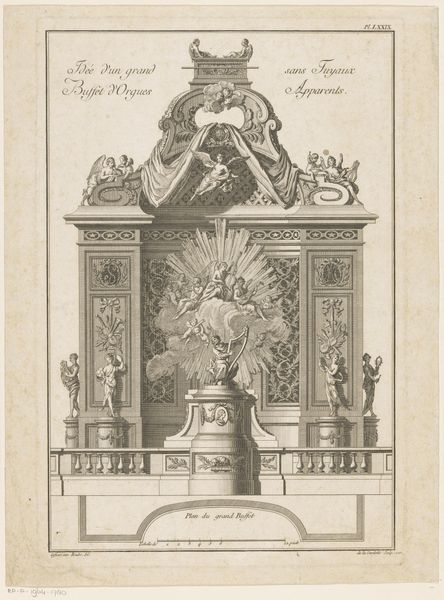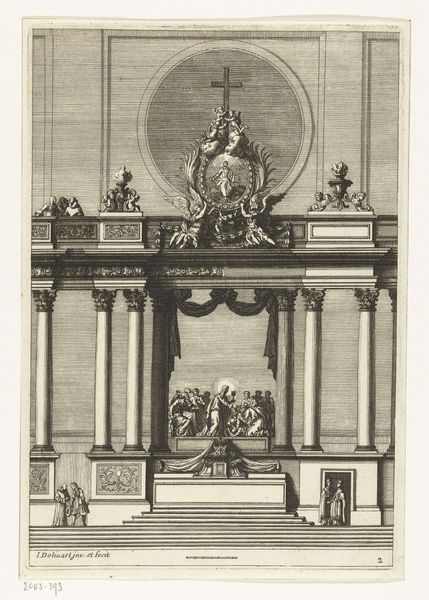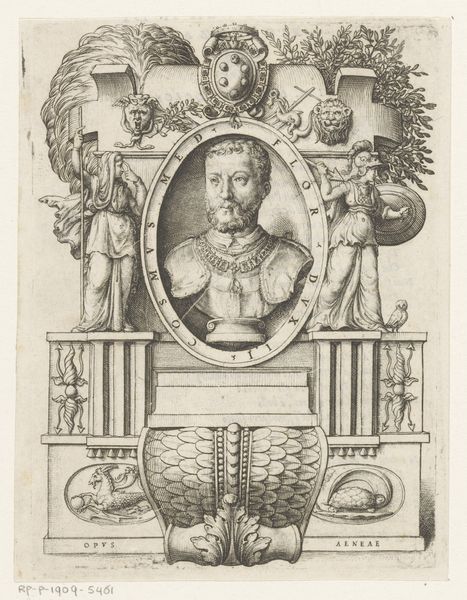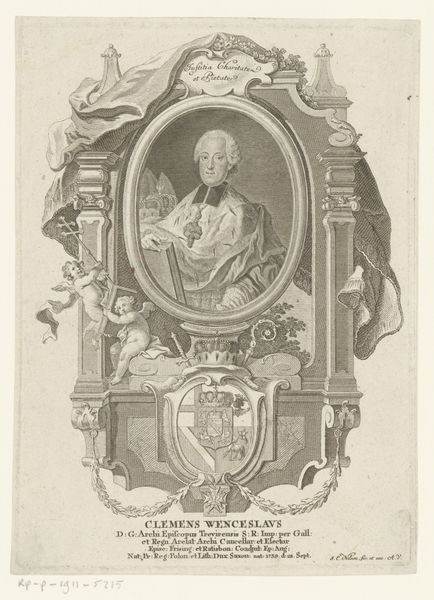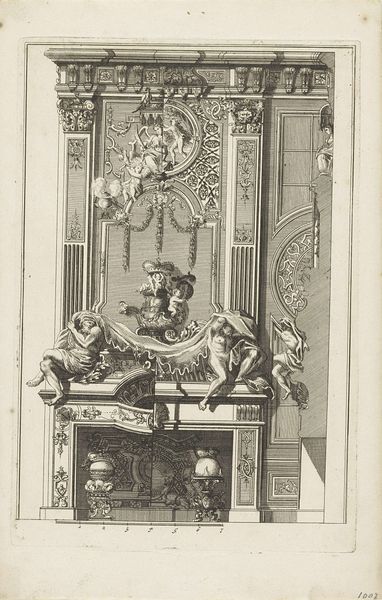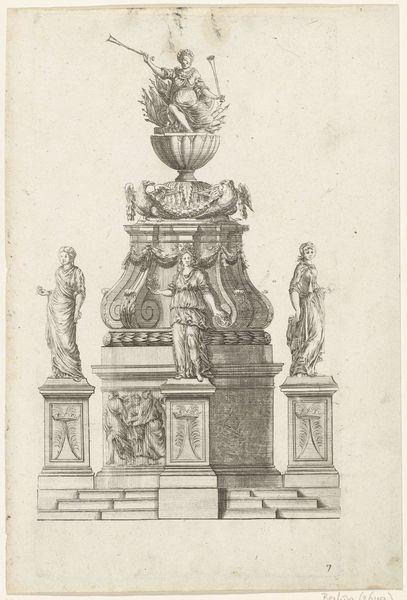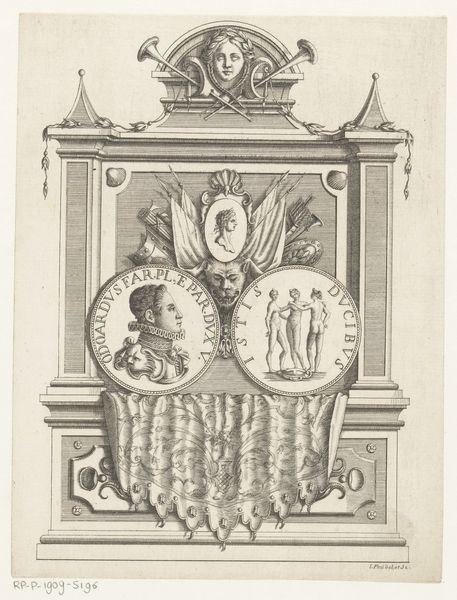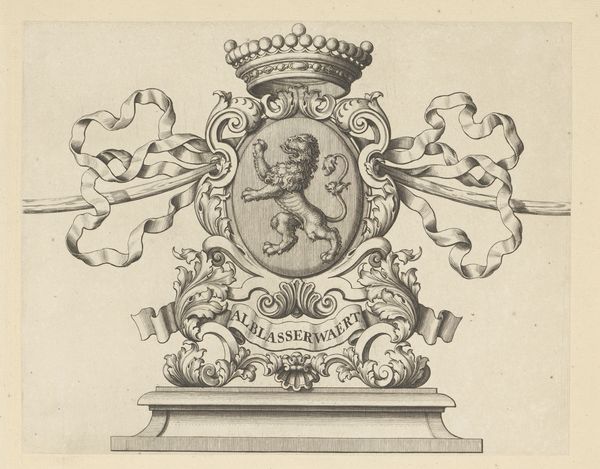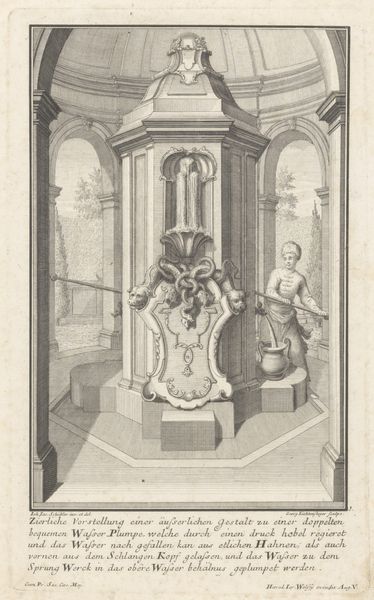
Geornamenteerd architectonisch object met het portret van Ranuccio Farnese I, hertog van Parma en Piacenza 1706 - 1796
0:00
0:00
print, engraving
#
portrait
#
baroque
# print
#
geometric
#
history-painting
#
decorative-art
#
engraving
Dimensions: height 190 mm, width 147 mm
Copyright: Rijks Museum: Open Domain
This ornamental architectural object with the portrait of Ranuccio Farnese I, Duke of Parma and Piacenza, was produced by Giuseppe Pini, using etching techniques. The material qualities of the print influence its appearance, with the precise and delicate lines creating a sense of depth and texture. The etching process involves coating a metal plate with wax, drawing the design, and then immersing it in acid, which bites into the exposed lines. The plate is then inked and printed, transferring the image onto paper. The techniques employed demanded considerable skill, reflecting the traditions of printmaking that were intertwined with artistic expression. The social significance of this print lies in its celebration of power and status. As a form of visual communication, prints like these played a role in shaping perceptions of political figures. The materials and processes used in its creation are intrinsically tied to wider social issues of labor, politics, and consumption. Understanding the materials, making, and context is essential to grasp the full meaning of an artwork, challenging traditional distinctions between fine art and craft.
Comments
No comments
Be the first to comment and join the conversation on the ultimate creative platform.


